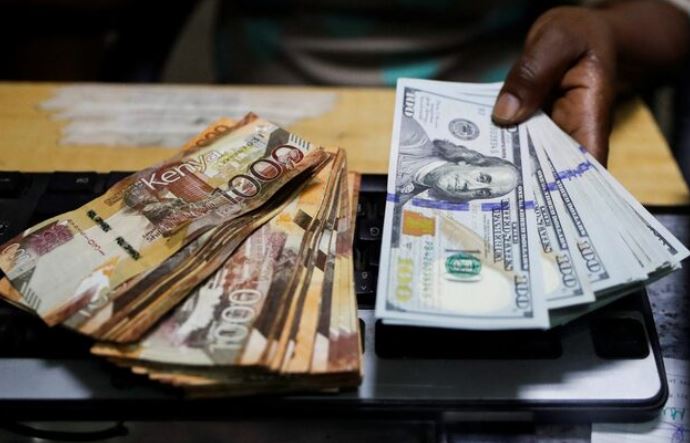Kenyan shilling holds steady at 129 against the dollar for a year

The local currency began its recovery in early February last year, after plummeting to a historic low of 160 against the greenback.
The Kenyan shilling has held steady against the US dollar, reaching a one-year milestone this month with an average exchange rate of 129.
Kenya’s apex bank, the Central Bank of Kenya (CBK), quoted the shilling at 129.23 on Friday.
More To Read
- Foreign workers in Kenya remitted home Sh91 billion - CBK
- CBK revises credit pricing model, adopts new benchmark rate for loan pricing
- Tourism and agriculture leading in hiring as other sectors stumble
- Kindiki welcomes CBK lending rate cut, says economy on recovery path
- Lobby group accuses DPP of shielding graft suspects, warns economy is on brink
- TICAD9 summit ends with ambitious pledges to drive Africa’s transformation
The local currency began its recovery in early February last year, after plummeting to a historic low of 160 against the greenback.
A combination of monetary tightening by the CBK and improved investor sentiment helped fuel a sustained rally, bringing the currency back below the 130 mark by late July 2024.
Since then, the currency has consistently traded within a narrow band, averaging 129 to the dollar.
Ideally, this resilience underscores a period of relative calm in the foreign exchange market.
A stable run against the greenback comes as a welcome relief for both consumers and importers.
With import costs closely linked to the strength of the shilling, the sustained exchange rate offers some breathing room for the economy, particularly in keeping the prices of imported goods in check.
Illustratively, comparing the current average exchange rate of 129 to the historic low of 160 recorded early last year, the Kenyan shilling has strengthened by 31 units.
This represents a 19 per cent gain, meaning importers are now spending Sh19 less on every shilling used to buy a dollar for imports.
Consequently, this recovery ultimately benefits consumers, who are likely to experience its impact through more stable and predictable commodity prices.
As Kenya remains a net importer, a steady shilling helps cushion households from sudden cost spikes in essential goods.
A strong shilling is also expected to boost the country’s forex reserves as importers strive for the much-needed dollar for imports.
Nevertheless, a strong shilling against the greenback is expected to cut down debt burden pressure since most of it is dollar-denominated.
However, in the remittance case, it is a disadvantage, despite the crucial role the diaspora inflows play in the country’s economy.
A weakening greenback against the local currency means receivers back home are not earning more in exchange compared to when the shilling was on a depreciating trend.
Western Union’s inaugural Global Money Transfer Index shows that about 67 per cent of Africans abroad send more money when the currency value falls in their receiving country, with 65 per cent of receivers agreeing that when currency values fall, they get more money.
Top Stories Today
Reader Comments
Trending

















































